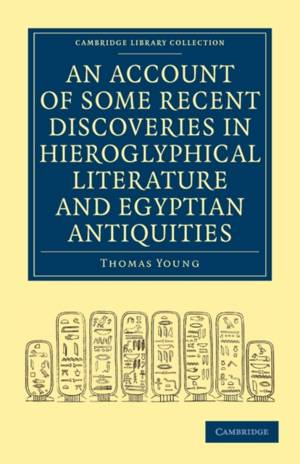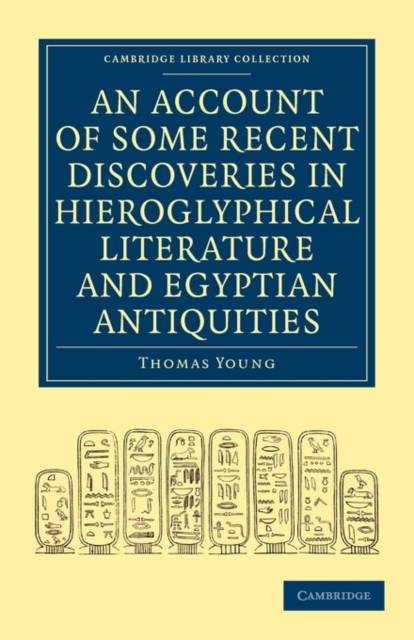
- Afhalen na 1 uur in een winkel met voorraad
- Gratis thuislevering in België vanaf € 30
- Ruim aanbod met 7 miljoen producten
- Afhalen na 1 uur in een winkel met voorraad
- Gratis thuislevering in België vanaf € 30
- Ruim aanbod met 7 miljoen producten
Zoeken
An Account of Some Recent Discoveries in Hieroglyphical Literature and Egyptian Antiquities
Including the Author's Original Alphabet, as Extended by
Young Thomas, Thomas Young
€ 56,45
+ 112 punten
Omschrijving
Thomas Young (1773-1829) was an English physician who was one of the first modern scholars to attempt to decipher ancient Egyptian hieroglyphs, and made significant contributions to a variety of other academic disciplines. He was elected a Fellow of the Royal Society in 1794 and in 1803 published an article establishing the wave theory of light. Young became interested in hieroglyphs in 1814, when he was sent a fragment of papyrus from Egypt. After acquiring a copy of the Rosetta Stone inscriptions Young made rapid progress, publishing his results in 1816 and 1819. When Champollion published his groundbreaking work on hieroglyphs in 1822 Young believed that Champollion had based that work on his earlier translations without acknowledgement, which Champollion denied. This book was published in 1823 in an attempt by Young to lay 'public claim to whatever credit be my due', and provides a summary of his hieroglyphic research.
Specificaties
Betrokkenen
- Auteur(s):
- Uitgeverij:
Inhoud
- Aantal bladzijden:
- 180
- Taal:
- Engels
- Reeks:
Eigenschappen
- Productcode (EAN):
- 9781108017169
- Verschijningsdatum:
- 19/08/2010
- Uitvoering:
- Paperback
- Formaat:
- Trade paperback (VS)
- Afmetingen:
- 140 mm x 216 mm
- Gewicht:
- 235 g

Alleen bij Standaard Boekhandel
+ 112 punten op je klantenkaart van Standaard Boekhandel
Beoordelingen
We publiceren alleen reviews die voldoen aan de voorwaarden voor reviews. Bekijk onze voorwaarden voor reviews.








